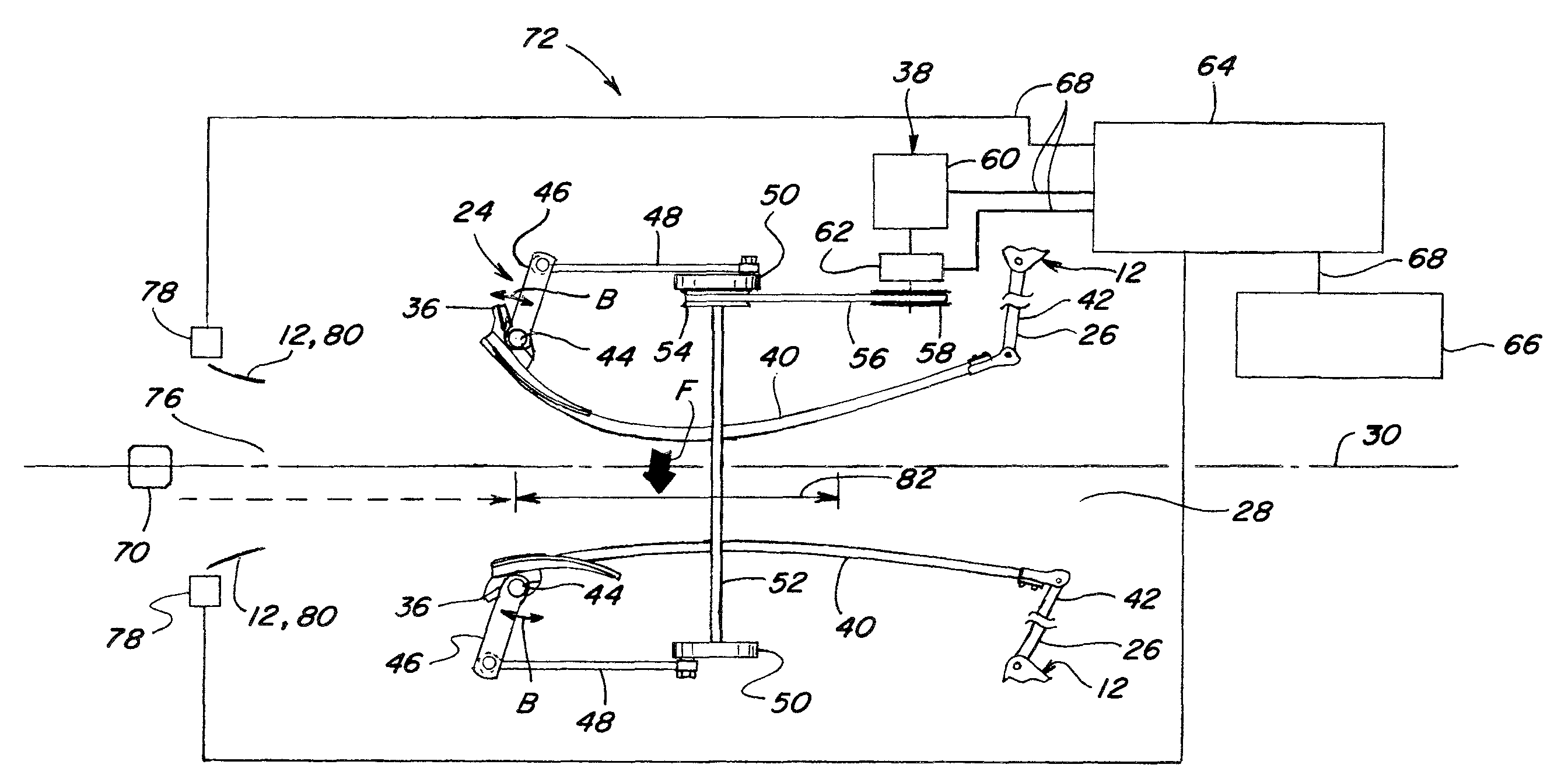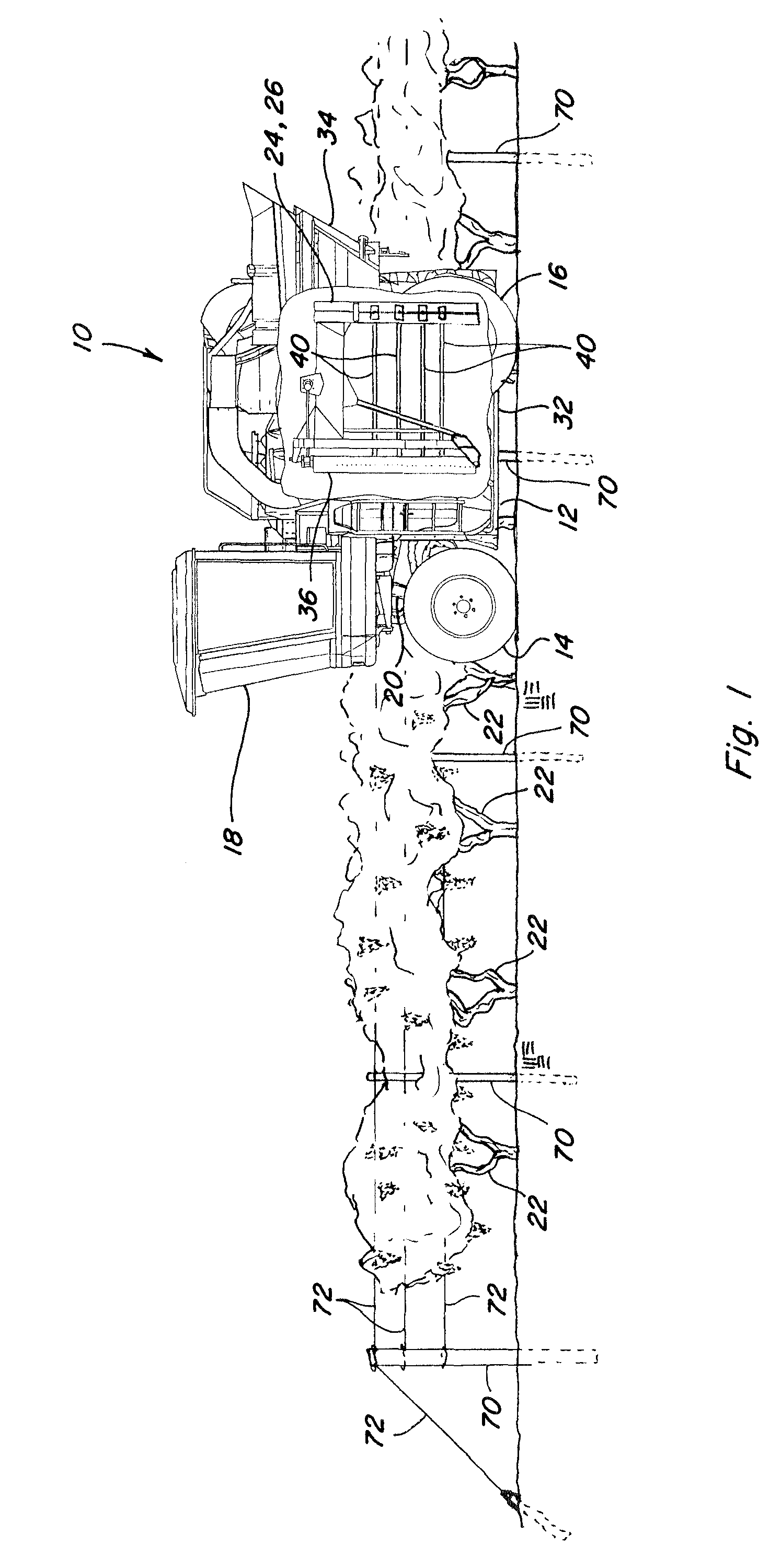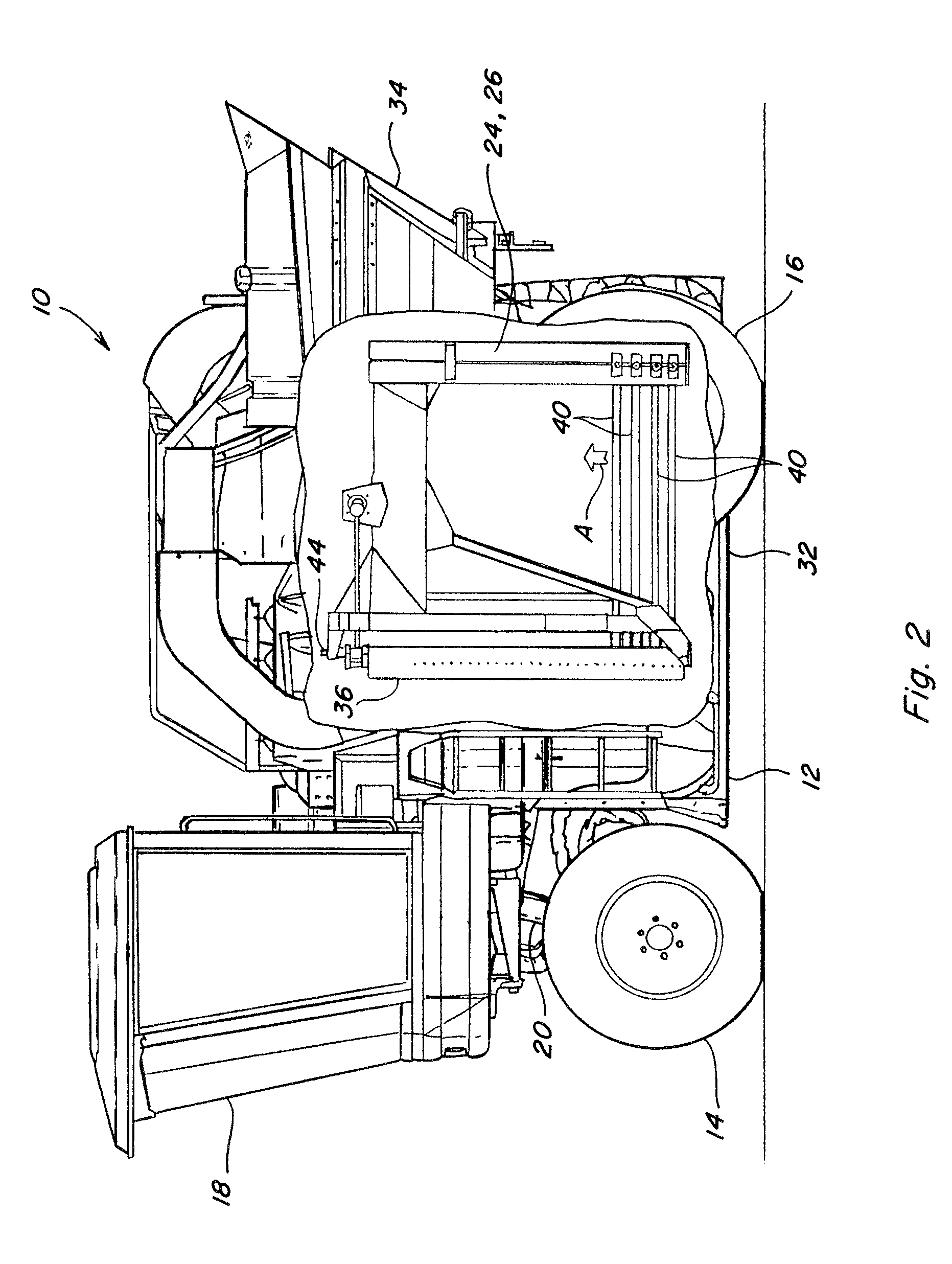[0007]According to the invention, what is disclosed is a harvester for fruits such as grapes, berries and the like, incorporating a
system and method for detecting standing rigid, unyielding or potentially damaging objects, particularly metal or metal reinforced posts, poles, and the like, in the path of harvesting apparatus of the harvester, and adapting the operation of the harvesting apparatus for passage about the standing objects, in a manner for overcoming one or more of the problems and shortcomings set forth above, namely, reducing forces exerted thereagainst for minimizing potential wear and / or damage,
noise, and the like.
[0010]In operation, responsive to the sensing of entry of a rigid upstanding object into the passage, the movements of the at least one movable member will preferably be reduced or altered when the object is within the passage adjacent to a predetermined portion of the movable member which would otherwise exert a potentially damaging force against the object, so as to substantially reduce or minimize damage to the movable member or members. This can also reduce or minimize damage to the rigid object and reduce the noise and vibration transmitted to the operator platform or cabin of the harvester. Such reductions or alterations of the movements can comprise, for instance, altering the connection of the drive to the movable member or members to allow contact with the object to push the member or members sidewardly outwardly relative to the passage, away from a center region thereof, or operating the drive in a manner for reducing the forces, such as reversing the drive, idling the drive, or other suitable action. As an example, a
clutch can be used for connecting a motive device, e.g., a fluid or
electric motor, belt, chain, or other drive, to the at least one member, and the
clutch can be temporarily slipped or disengaged for the appropriate time such that the member can be compliantly or passively moved past the object. As another example, a fluid motor, if used, can be destroked at the appropriate time to provide the compliance. If the movements are oscillations, the oscillations can be stopped, partially reversed, or the amplitude and / or or frequency thereof can be reduced or altered to achieve the desired force reducing effect, e.g., passage about the object in a minimally forceful manner. This also can be achieved, for instance, by the temporary slipping or disengaging of the drive from the member or members, or appropriately controlling the drive, e.g., slowing speed, such that the movable members are positioned for exerting minimum or near minimum forces against the object during passage thereabout. As an alternative, one or more of the movable member or members can be positively moved or retracted away from the object while in proximity thereto, for reducing the forceable contact therewith.
[0012]According to another preferred aspect of the invention, the member or members can comprise a flexible rod or rods, which are alternatingly flexed and relaxed, e.g., by the oscillating movements. In one embodiment of the invention, the reductions or relaxations will occur only when a region of maximum flexure of the rods will occur in close proximity to the rigid object, so as to minimize any effect on harvest yield.
[0013]According to another preferred aspect of the invention, for detecting upstanding rigid objects partially or entirely of metal, such as metal posts, and metal
reinforced concrete posts, the sensor can include a metal
detector or detectors. Alternatively, or additionally, sonic, e.g., ultrasonic, imaging, or
radar type sensors, operable for discerning upstanding rigid objects such as posts and the like, from trunks, branches, vines, and other portions of the plants from which the fruit is being harvested, can be used. Additionally, to facilitate sensing of non-metallic standing objects by a metal
detector, metal elements can be attached to the objects at an appropriate location or locations. For instance a metallic tape, sheet, or marker could be used. As a preferred location or locations for the sensor or sensors, they can be advantageously positioned adjacent to an inlet opening in connection with the passage. The sensor or sensors can also be configured and located, e.g., at a lower position, to minimize false detections of higher located trellis and guy wires, and other non-problematic metallic objects. Additionally, the sensor or sensors can be in known relation to a predetermined portion or aspect of the at least one member which exerts the greatest forces, e.g., region of greatest flexure of the rod or rods, such that the time that an upstanding rigid object will be in position to be most forcibly contacted thereby can be determined, and the movements thereof reduced or altered to reduce the forces exerted against the object, as the member or members passes it.
 Login to View More
Login to View More  Login to View More
Login to View More 


